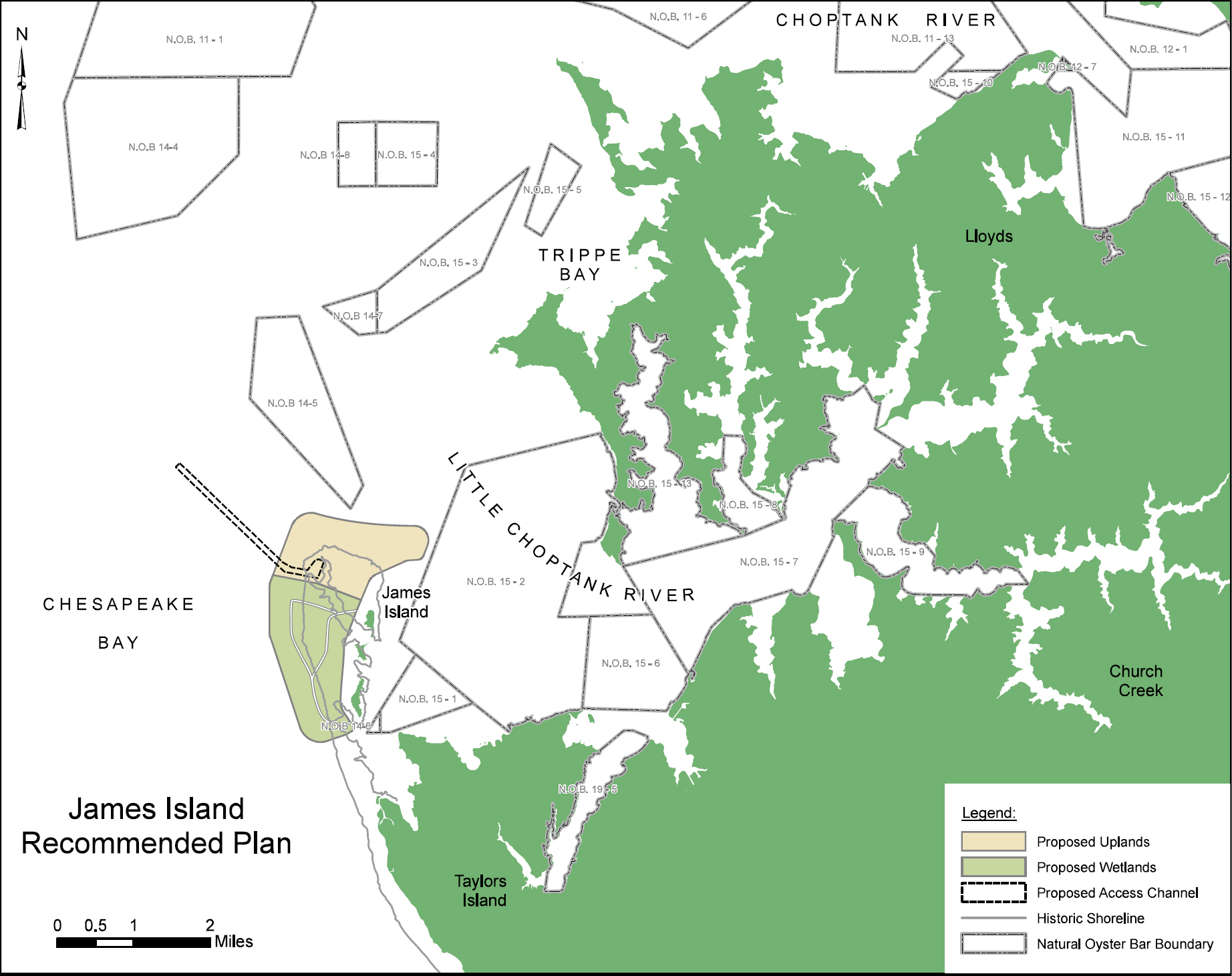The U.S. Army Corps of Engineers Baltimore District and the Maryland Port Administration (MPA) have signed a Design Agreement that allows for the next steps to be taken in the Mid-Chesapeake Bay Island Ecosystem Restoration Project (Mid-Bay Plan). The aim of the project, a partnership between the Corps and MPA, is to restore two severely degraded islands in the Chesapeake Bay while finding a beneficial use for dredged material from the Port of Baltimore.

The Design Agreement formally allows for the team to begin the pre-construction engineering and design phase (PED) of this project.
Over the past several decades, James and Barren islands in western Dorchester County have experienced significant erosion. Island habitat at both locations will be restored and expanded to provide thousands of acres of wetland and terrestrial habitat through the beneficial use of material dredged from Baltimore Harbor approach channels. James Island will accept material from channels in the Maryland waters of the Chesapeake Bay used by ships going to and from the Port of Baltimore, and Barren Island will accept material from nearby shallow-draft channels.
At the larger James Island, the island’s boundaries will be reinforced to prevent erosion, and cells will be delineated within the island where dredged material will be placed over the years to rebuild the island. The process will be very similar to the successful Paul S. Sarbanes Ecosystem Restoration Project at Poplar Island to the north in the Chesapeake Bay. Poplar Island began construction in 1998 and to date has accepted about 34 million cubic yards of dredged material. An expansion of Poplar Island is nearly complete and will increase its capacity until the Mid-Bay Island Project can accept dredged material. James Island will be able to accept an estimated 90 to 95 million cubic yards of dredged material, which should provide at least 30 years of dredged material placement capacity for maintenance dredging associated with the Port of Baltimore.
The recommended Mid-Bay plan consists of building environmental restoration projects to restore 2,144 acres of remote island habitat (2,072 acres at James Island and 72 acres at Barren Island). The James Island restoration includes a habitat distribution of 45 percent upland and 55 percent wetland. Barren Island will be restored to 100 percent wetland habitat.
The PED phase will begin right away, and the first of many construction projects will restore Barren Island and protect it from future erosion. That work is scheduled to begin in 2022 pending the availability of funds and would be followed two years later by construction of James Island.




